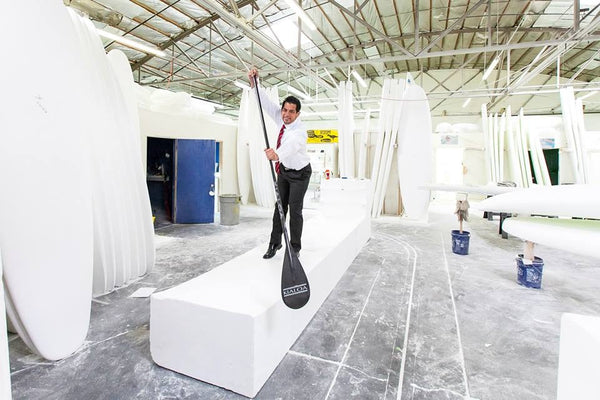
Virtual Reality Paddle Board Training: The Next Wave
Year-round SUP practice indoors. Use VR scenes, balance rigs, and data to sharpen catch, cadence, turns, and confidence—then bring the gains to real water.
Virtual reality paddle board training brings year-round, weather-proof SUP practice indoors.
Start with a headset, a modest balance surface, and technique scenes; level up with paddle adapters, haptics, and erg-style resistance.
Use VR to refine clean catches, cadence, early exits, and buoy turns, while tracking SPM, heart rate, and symmetry.
Blend short VR sessions (technique, tempo, intervals) with outdoor paddles for the best gains.
Keep safety in mind—clear floor space, proper straps, and motion-friendly settings—and treat VR as a complement to real water.
The result: sharper technique, steadier fitness, and faster progress when you launch.
Table of contents
Weather, distance, and busy schedules used to dictate when you could paddle. Not anymore. Virtual reality paddle board training brings waterways indoors so you can practice balance, stroke mechanics, race starts, and even downwind timing—any day of the year. Done right, VR doesn’t replace real water; it speeds up learning, preserves fitness between sessions, and makes skills stick when you do launch.
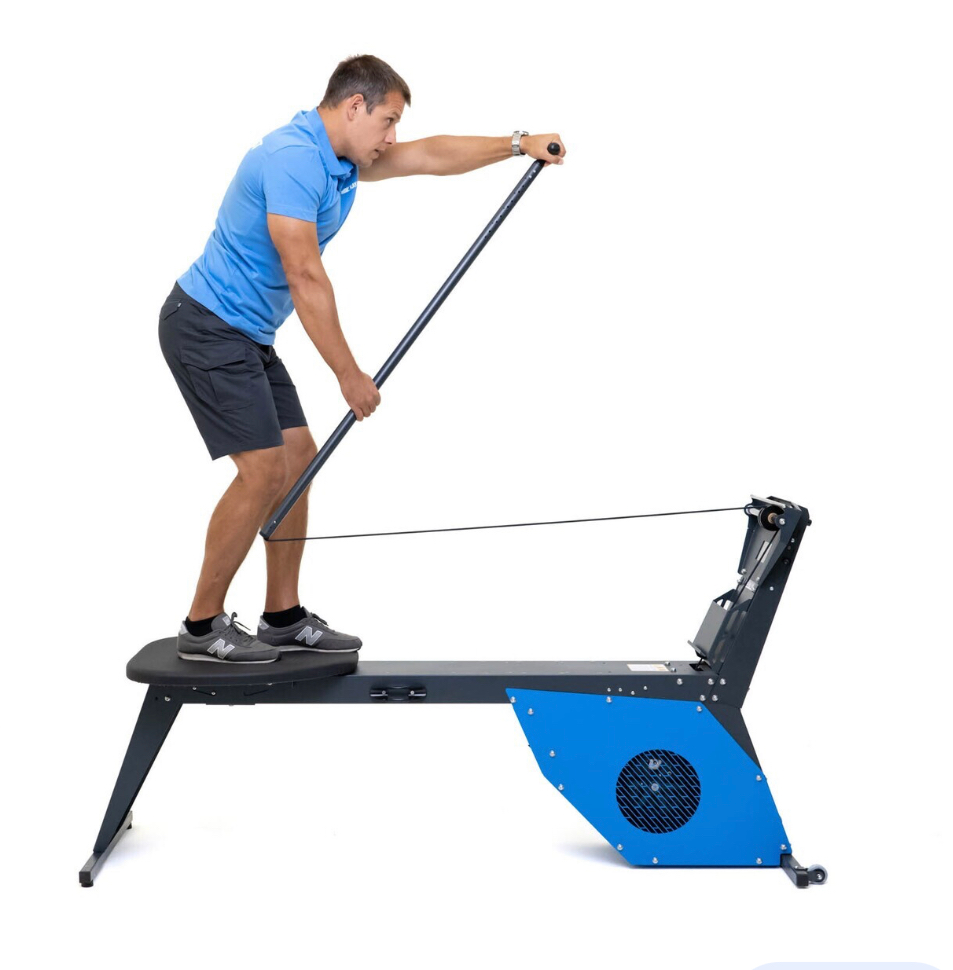
What virtual reality paddle board training actually does for you
-
Year-round reps: Build technique and endurance regardless of weather or daylight.
-
Safe skill progression: Practice catches, cadence, and step-backs without cold water consequences.
-
Condition variety: Flatwater, chop, currents, and surf-style scenarios on demand.
-
Instant feedback: Stroke count, pace, stroke length, heart rate, and video angles you can review.
The basic VR SUP setup (good → better → best)
Good (starter):
-
Stand on a balance pad/board or thick yoga mat for micro-instability.
-
VR headset with a controller-as-paddle (hand orientation matters).
-
Technique apps/scenes for flatwater and gentle chop.
Better (training focused):
-
Indo balance board or half-ball platform + headset.
-
A paddle grip or adapter for your controller to enforce blade orientation.
-
External HR monitor + cadence overlay for data.
Best (performance):
-
SUP ergometer/rower hybrid or resistance rig that mimics on-water load.
-
Haptic handle or paddle shaft with resistance cues on catch and release.
-
Large play space for step-back pivots, buoy turns, and stance changes.
What skills translate best from VR
1) Catch mechanics
-
Full blade “burial” timing and vertical shaft alignment are easy to pattern in VR.
-
Cue: hear/feel the “anchor,” then move the body past the blade, not the other way around.
2) Cadence & rhythm
-
Shorter, cleaner strokes with a steady breathing pattern reduce wasted energy.
-
Use a metronome overlay or target SPM zones for different workouts.
3) Early exit & tracking
-
Exiting around your feet kills yaw and saves your low back.
-
Watch on-screen line tracking—if you snake, your exit is late or shaft is angled.
4) Turns & footwork
-
Practice sweep strokes and step-backs with a planted “blade.”
-
VR lets you repeat buoy turns safely until the movement is automatic.
5) Downwind timing (simulated)
-
Link virtual “bumps” by catching the backside, adding 2–3 fast strokes, then resting on glide.
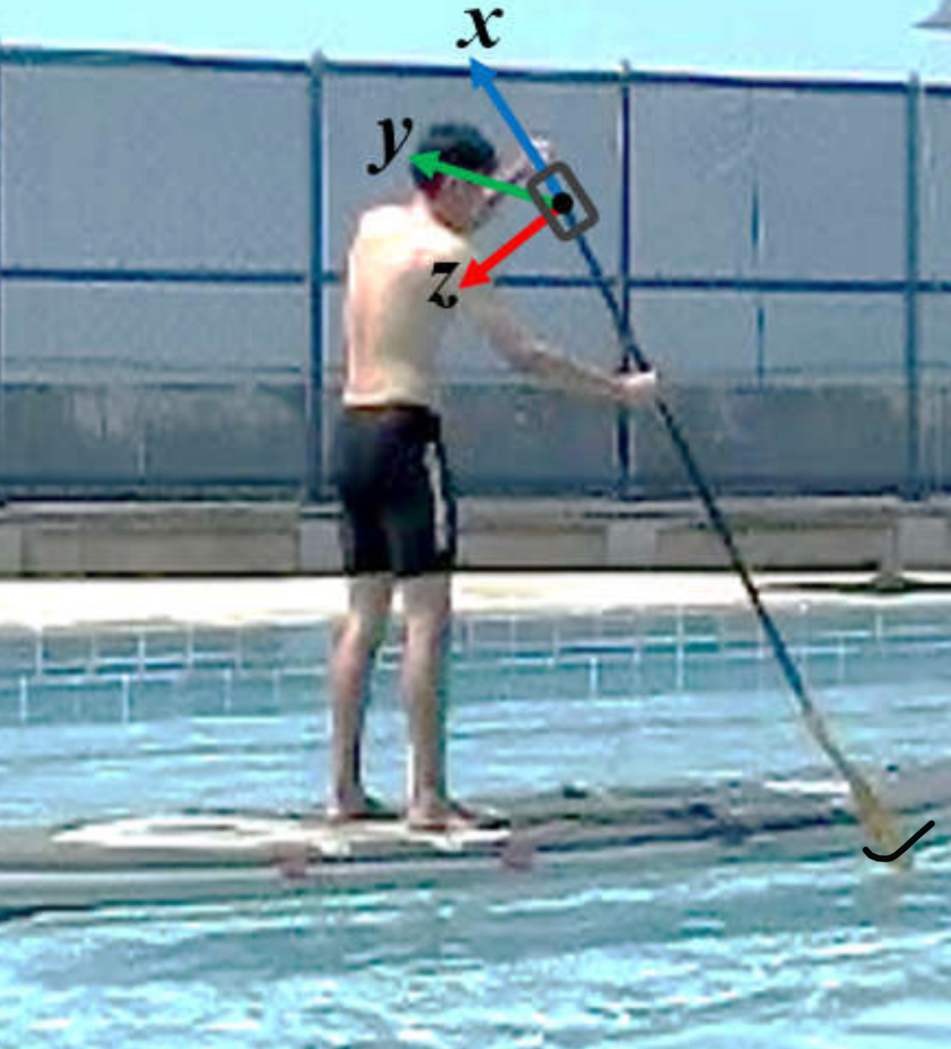
Sample VR SUP workouts (plug-and-paddle)
Technique Base (20–25 min)
-
3× (3 min easy @ comfortable cadence + 2 min “silent catch” focus).
-
Cues: zero splash at entry, torso rotation, early exit.
Tempo Builder (30 min)
-
10 min steady → 3× (4 min strong + 2 min easy) → 4 min steady.
-
Focus: same clean mechanics at higher heart rate.
Intervals (24–28 min)
-
6× (2 min hard + 2 min easy).
-
Keep technique intact; if form breaks, shorten the “hard” to 90 sec.
Buoy Turn Drill (15–20 min)
-
6–8 laps around a virtual marker.
-
Two laps neutral stance, two with step-back pivot, two with cross-bow sweep.
Chop Skills (20 min)
-
Slight offset stance; higher cadence; small draws to hold line.
-
Goal: quiet upper body, soft knees, steady nose.
Data that actually matters
-
Stroke rate (SPM): anchor of your training zones.
-
Distance per stroke / virtual speed: early indicator of efficiency.
-
Left/right symmetry: fix side imbalances before they become shoulder issues.
-
Heart rate: keep easy days easy; earn your hard days.
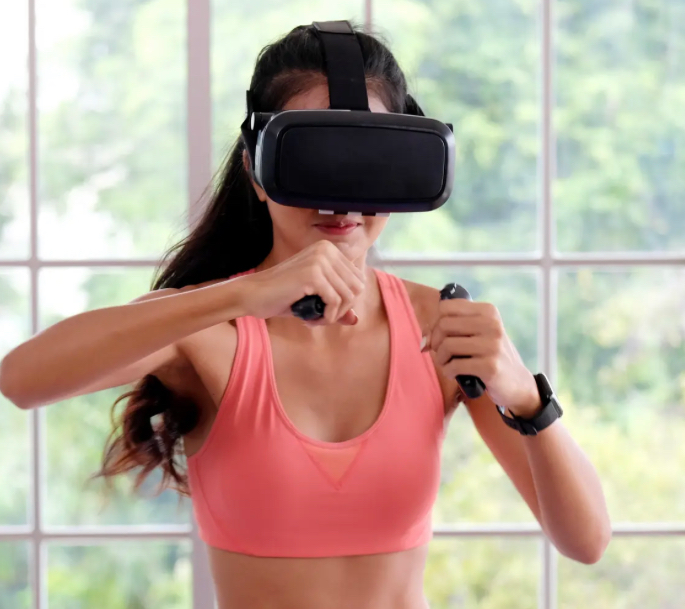
How to make VR feel more “real”
-
Floor surface: a slightly unstable platform (but not wobbly) brings core/bracing online.
-
Controller-to-paddle adapter: enforces correct blade angle and hand spacing.
-
Haptics/resistance: even light catch resistance teaches timing.
-
Fan + sound: wind and water audio + a floor fan improve immersion and pacing cues.
Safety & comfort indoors
-
Clear a 2 m × 2 m space; remove tripping hazards.
-
Use wrist straps or paddle tether for controllers.
-
If you’re prone to motion sickness: start in “comfort” mode, limit yaw, use a fixed horizon, and build exposure gradually.
-
Short sessions (15–30 min) beat one long one while you adapt.
Blending VR with real water (a 2-week template)
Week 1
-
Mon: VR Technique Base (25 min)
-
Wed: On-water Zone 2 cruise (40–50 min)
-
Fri: VR Buoy Turn Drill (20 min)
-
Sat/Sun: Optional easy paddle (30 min)
Week 2
-
Tue: VR Intervals (24–28 min)
-
Thu: On-water tempo 3×8 min (w/ 3 min easy)
-
Sat: On-water skills (chop day or step-backs) 30–40 min
-
Sun: Recovery walk + mobility 20 min
Repeat, adding 5–10% time or one extra interval every 1–2 weeks.
Who benefits most
-
Beginners: faster confidence—stable stance, vertical shaft, early exit.
-
Fitness paddlers: year-round consistency and disciplined cadence.
-
Racers: high-quality intervals, buoy turns, and downwind timing mid-week.
-
Surf/river curious: footwork patterns and bracing before trying the real venue.
Limits & realistic expectations
-
Water feel: VR can’t fully replicate real fluid resistance or random chop.
-
Balance transfers best when you add a controlled instability surface.
-
Still get outside: sunlight, real wind, and micro-adjustments are irreplaceable. Use VR to reinforce, not replace, water time.
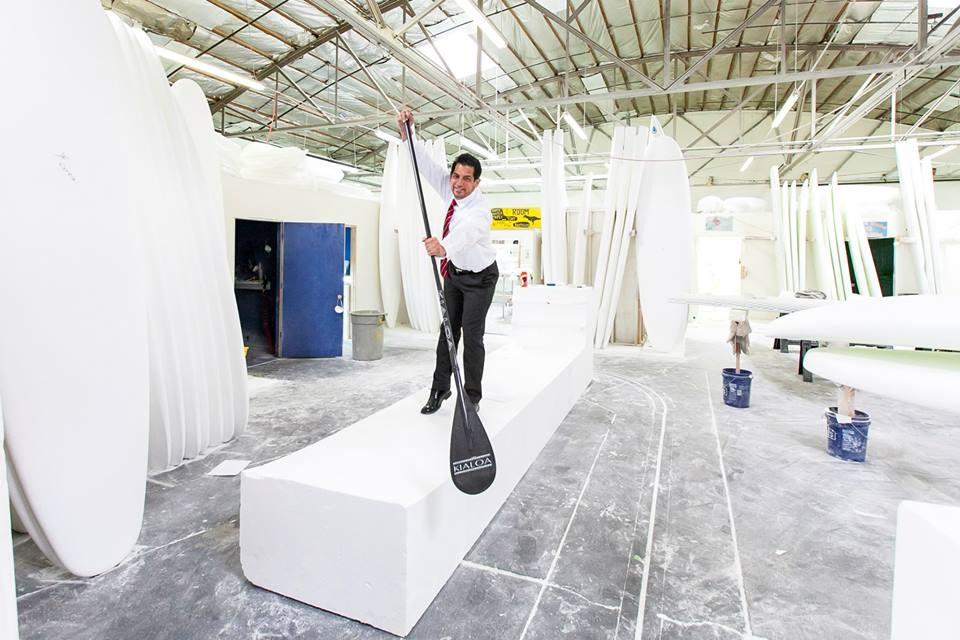
Final Thoughts
Think of VR as your indoor coach and metronome. It keeps technique sharp, cardio honest, and habits consistent, so your first spring paddle feels like mid-season form. Keep sessions short, stack them often, and bring what you learn—clean catches, early exits, better footwork—back to real water. That’s the loop that makes you noticeably better.
FAQs
Can VR replace real paddling?
No—it complements it. Use VR for reps, feedback, and fitness; water time integrates the skills.
Do I need a special paddle?
A controller adapter or short training shaft helps align blade angle and hand spacing, but you can start with standard controllers.
What if I get motion sick?
Use comfort settings, fixed horizon, gentle scenes, and keep early sessions ≤15 minutes. It usually fades with exposure.
Is a balance board required?
Not required, but a slightly unstable platform improves core/bracing carryover.
How do I track progress?
Log SPM, HR, and virtual pace. Film a quick angle monthly to compare catch/exit timing.
Will VR hurt my shoulders?
It shouldn’t. Keep strokes short/clean, rotate from the torso, and use a mid-small blade load if your setup offers resistance.
Can racers benefit?
Yes—buoy turn drills, starts, and intervals mid-week; long aerobic on water.
What about kids or beginners?
Great for confidence. Keep sessions playful and short, emphasize stance and balance.
Any home setup tips?
Soft mat underfoot, fan for airflow, bottle within reach, and a timer you can hear.
How often should I VR train?
2–4 times/week, 15–30 minutes each, paired with 1–3 outdoor paddles when conditions allow.





